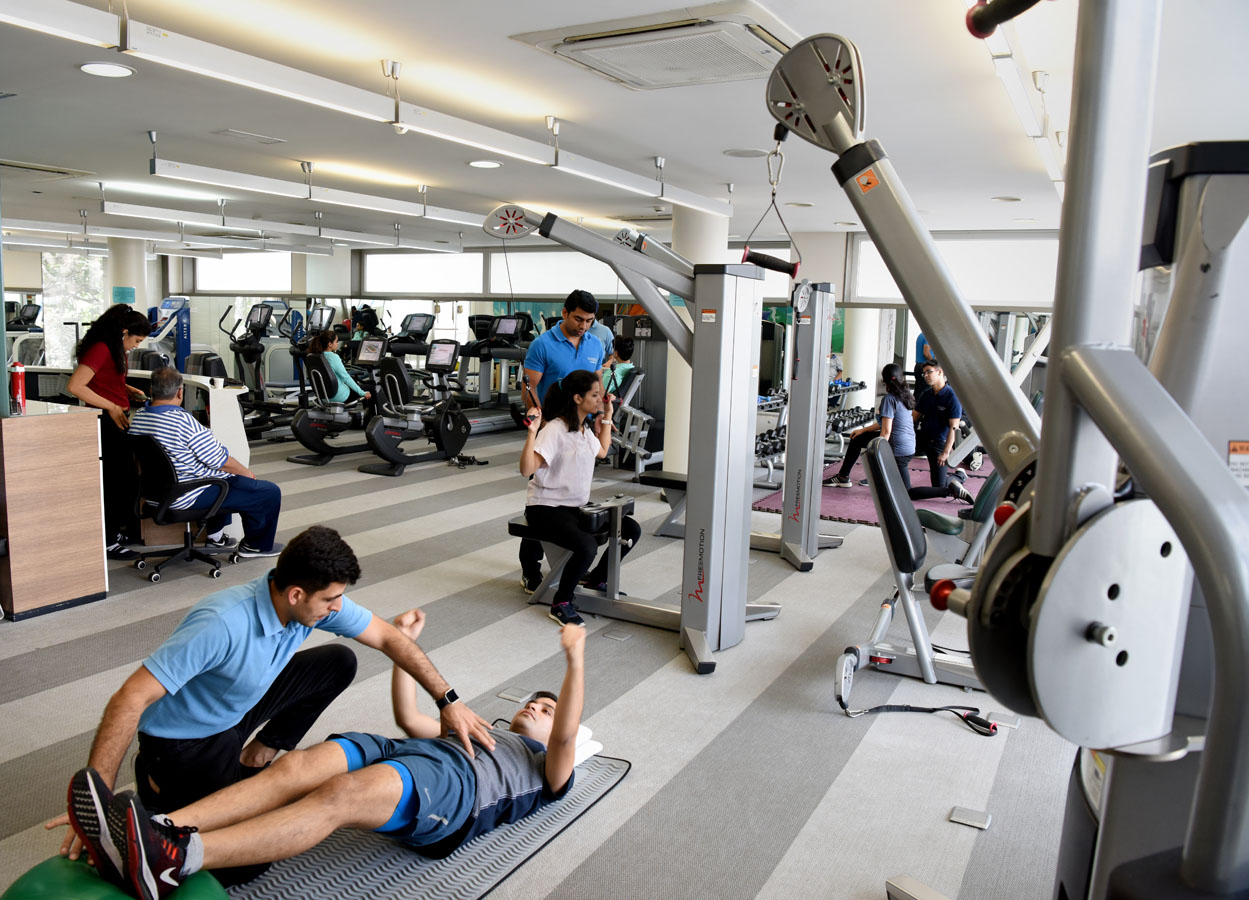Did you know?
A 2023 study in the Journal of Strength and Conditioning Research revealed that nearly one in four gym participants suffer injuries caused by improper form or lack of qualified supervision. The National Safety Council further reported that over 468,000 people in the U.S. required emergency treatment for gym-related injuries in just the past year.
For high-performing professionals, the risk is even greater. Intense training routines layered onto demanding work schedules, combined with inadequate recovery and limited postural or movement guidance, often create the perfect conditions for breakdowns in performance, recurring pain, and long-term dysfunction.
So here’s the real question:
Is your gym routine helping you get stronger or putting you at risk for future pain and injury?
The Illusion of Fitness: When Movement is Misguided
In today’s high-performance culture, “fitness” has become a badge of honor. Yet beneath the surface, the reality often tells a different story.
Executives, consultants, and elite professionals fill their schedules with early-morning HIIT, midday weight sessions, or late-evening yoga. But without expert supervision and clinical insight, even the most disciplined workout can be compromised by poor form, muscular compensations, and hidden joint stress.
Because true performance isn’t defined by how much you lift, it’s defined by how efficiently and intelligently your body moves.

Why Gym Injuries Happen?
- Lack of Movement Assessment – Standard gym programs rarely evaluate joint mobility, fascial restrictions, or neuromuscular control before prescribing exercise.
- Imbalanced Muscle Training – Overdeveloping certain muscle groups (e.g., chest, quadriceps) while neglecting their counterparts (e.g., back, hamstrings) leads to postural deviations and inefficiency.
- Neglected Recovery – Busy professionals often skip cooldowns, mobility drills, or structured recovery, creating cumulative dysfunction and increasing injury risk.
- Trainer Limitations – Most fitness trainers are not clinically equipped to identify subtle movement inefficiencies or underlying neuromuscular imbalances that drive recurring problems.
The result? Microtraumas, stiffness, and compensatory patterns that worsen silently until they become chronic pain.
What High Performers Really Need?
High-performing individuals don’t simply require increased activity, they require movement that is precise, efficient, and strategically guided.
This is where Supervised Exercise stands apart. At VARDĀN, we work with professionals who are already active but unknowingly dysfunctional. Through our clinical approach powered by Functional Manual Therapy® (FMT™), we bridge the gap between exercise and actual movement health.
FMT™ is not a fitness trend—it’s a clinical, evidence-based methodology that:
- Evaluates movement at the joint, muscle, and neurological levels
- Restores mechanical integrity before loading the body with intensity
- Retrains the nervous system to activate correct movement patterns
- Builds resilience through efficient, pain-free motion
Gym Workouts vs. Supervised Exercise (SupEx) : A Comparison
| Aspect | Typical Gym Workout | Supervised Exercise (SupEx) at VARDĀN |
|---|---|---|
| Objective | Aesthetics / Endurance | Function, Mobility, Long-Term Resilience |
| Assessment | Generalized (if any) | Detailed clinical evaluation (joints, fascia, nerves) |
| Instruction | Trainer-led, often group-based | One-on-one licensed clinical guidance |
| Progression | Reps & weight-based | Mobility → Control → Load → Performance |
| Risk | High if unsupervised or repetitive | Low due to constant biomechanical feedback |
| Outcome | Looks better (often temporarily) | Moves better, performs better, ages better |

Who Should Reconsider Their Routine?
- You maintain a regular workout routine, yet your body still feels stiff, restricted, and far from its true potential.
- Past injuries never fully resolve and tend to flare up whenever you increase intensity or push your limits.
- Long, demanding workdays leave you battling poor posture, recurring neck strain, and deep fatigue.
- Your medical scans may appear “normal,” yet the unexplained pain continues to interfere with your daily life
- You aspire to stay active, strong, and independent as you age—without relying on surgery or invasive solutions.You don’t need to stop exercising.
How VARDĀN’s FMT™ Helps High Performers Future-Proof Their Fitness
- Releasing restricted fascia and mobilizing tight joints
- Re-educating muscle groups to activate in the right sequence
- Preventing injury by improving core control and postural alignment
- Building functional strength that supports both lifestyle and athletics
- Designing customized movement plans based on detailed clinical evaluation

Smart Recovery Is the New Strength
Performance isn’t just about intensity. It’s about intelligent recovery, structural readiness, and movement efficiency.
Don’t fall into the trap of chasing fitness without function. The strongest professionals today are investing not just in aesthetics—but in sustainable, pain-free performance.
Because real strength isn’t how much you can lift.
It’s how well you can move—every day, without restriction.
Move Smarter. Perform Longer. Live Better.
At VARDĀN, we help high-performing individuals like you reclaim control over their bodies with personalized, supervised Exercise care. Because pain-free function is no longer a luxury, it’s the standard for modern living.
Call us today at +91 011 43580720-22 / 9810306730
📅 Book your root-cause consultation at www.vardan.in
📍 Visit our advanced physiotherapy clinic in Delhi in Lajpat Nagar




